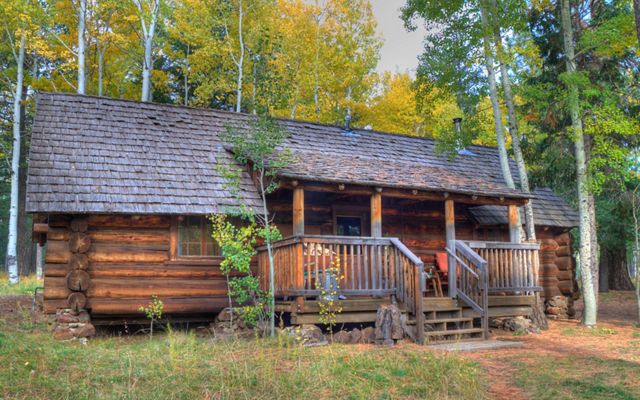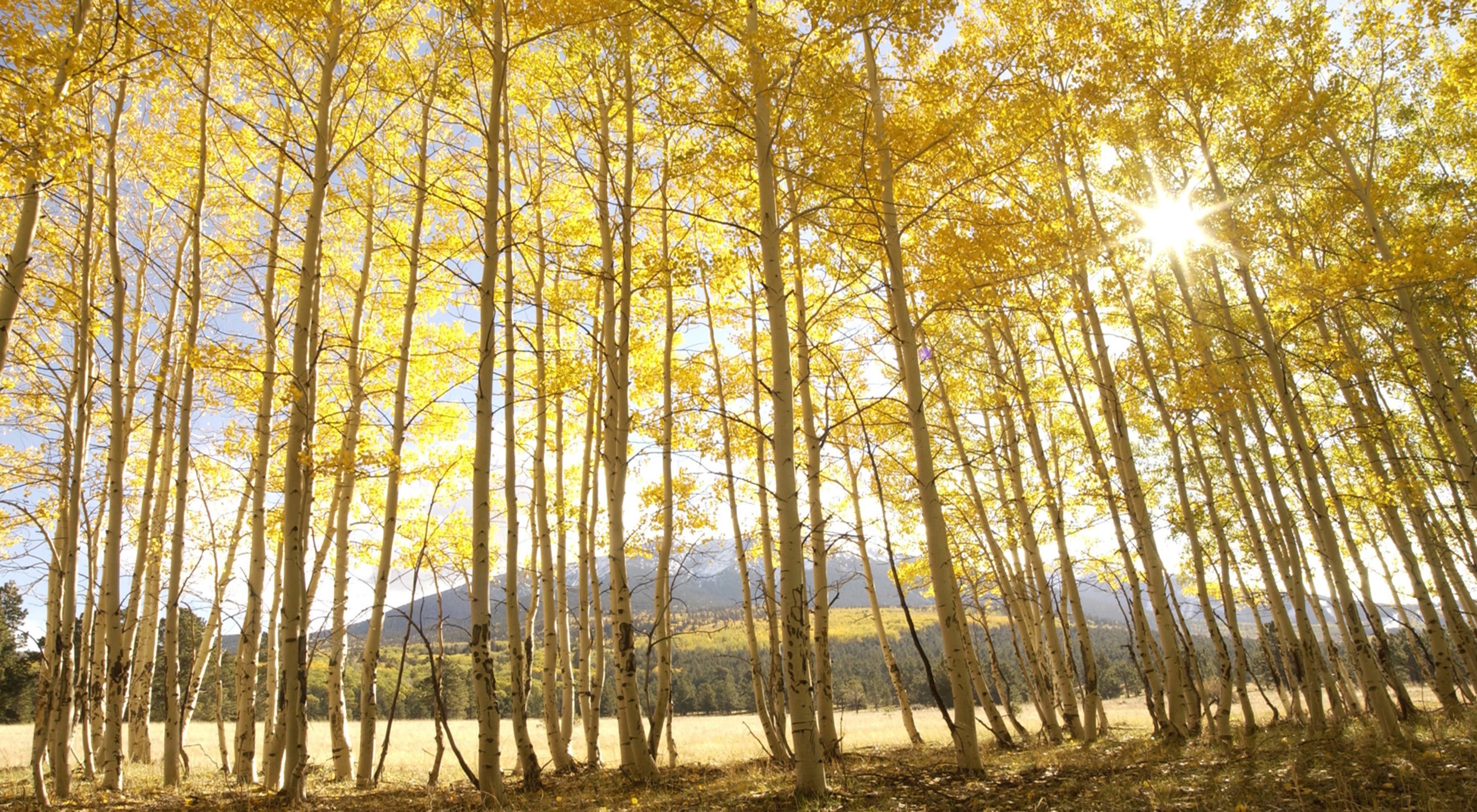Our preserves in Arizona share much of the colorful history of the state itself, including indians and cowboys, the cavalry, prospectors and Eastern dudes, even a Civil War skirmish.
Aravaipa Canyon Preserve
In prehistoric times, Hohokam, Mogollon, and Salado peoples occupied the canyon, growing corn and other native crops in its fertile riparian soils. By the sixteenth century, Sobaipuri Indians were planting sophisticated irrigated farms and living in large villages on Aravaipa’s west end, near the San Pedro River. During the eighteenth century, the Aravaipa band of Apaches displaced the Sobaipuris and fought many heated battles with the United States cavalry.
Hispanic and Anglo settlers brought herds of cattle, goats, and sheep to the area. The remains of several copper mines within a 20-mile radius of the preserve’s east end attest to the importance of that industry during the late 1800s and early 1900s. Today, ranching continues, though at a diminished level from years past. The town of Aravaipa, once a prosperous mining town, is now a classic Arizona ghost town.
The Nature Conservancy initiated the protection of Aravaipa Canyon in 1971 with the purchase of the Panorama Ranch from Cliff and Fred Wood. The following year, Defenders of Wildlife and the George Whittell Trust assumed ownership. Between 1972 and 1986 the Trust added property to the preserve. Then, in 1988, Defenders of Wildlife transferred the preserve back to the Conservancy.
Hart Prairie Preserve
Located on the western slope of the sacred San Francisco Peaks near Flagstaff Arizona, Hart Prairie is an oasis of beauty and grandeur distinguished by its history of rigorous land stewardship and restoration ecology. Hart Prairie Preserve was once known as Fern Mountain Ranch, and is home to a globally rare community of Bebb Willows and over 250 species of native trees, flowers and grasses. The preserve provides opportunities for visitors to watch the aspens gracefully sway in the wind, climb Fern Mountain, study native plants, watch monsoon storms or sing along with over 120 species of birds.
The property is listed on the National Register of Historic Places, the Nation's official list of cultural resources worthy of preservation. Its recordable history is a fascinating one that begins centuries ago.
According to western interpretation of archaeological evidence, Native Americans have used this area for thousands of years. The early populations of people, referred to as "Archaic Indians," were the earliest Native Americans known to have been in this area, from about 7000 B.C. to 300 B.C. They were followed by the Sinagua and the Cohonina, two Native American groups who moved into this area about 700 A.D. The Cohonina lived to the west of the Peaks and the Sinagua lived to the east; Walnut Canyon and Montezuma's Castle are well-known Sinagua sites. They made their living as farmers who supplemented their diet extensively with wild plants and game. Although neither group had permanent settlements at this elevation, they undoubtedly used the Peaks as hunting grounds as their obsidian points or arrowheads have been found on the preserve. The Sinagua left this area in the late thirteenth century, during a long period of severe drought. Many of them moved south to the Verde Valley, where their "cousins", the southern Sinagua, were already established.
One of the first modern buildings on the property was started by Frank Hart in 1877, but he failed to get a roof on it before winter. As a result, he left Hart Prairie, never to return. In the early 1880s, Augustus Dillman Freudenberger, who had emigrated to the United States prior to 1865, homesteaded the property and took over Frank Hart’s partial building. While sheep ranching in the area, Freudenberger built the first Fern Mountain Ranch structures and added hay, potatoes, and some to cattle to the area. His brewery, which he had operated in Flagstaff, was sold to a man named Gruener to allow him to focus on Hart Prairie. Gus Dillman, as locals came to call him, married a former housekeeper for the Babbitt family. All six children, three of whom survived, were born at Fern Mountain Ranch, and the family continued there until the late 1920s.

The property also became an important part of Northern Arizona history from 1892 to 1901, when it served as the first stop on the tri-weekly stage run from Flagstaff to the Grand Canyon. While it was not an official meal stop, Mrs. Freudenberger always had refreshments available. In 1928, Gus’s son Albert sold the property to Harold S. Colton, founder of the Museum of Northern Arizona, who transferred to his sister Suzanne and her husband Robert Wilson. The Wilson family brought the property into the present day as a private family lodge, preserving its historic character and natural beauty.
Seeing the need for long-term preservation of the Bebb willow community and other natural resources, the Wilson family donated the property to The Nature Conservancy in 1994. The deed stipulates that the structures must be maintained in accordance with historic preservation standards, and the Conservancy is committed to doing so.
Building upon the areas rich history of research and education, every undertaking at Hart Prairie Preserve is a teaching opportunity. Biologist C. Hart Merriam set up camp near Hart Prairie Preserve in 1889 and studied the surrounding area, describing a set of six life zones extending from the bottom of the Grand Canyon to the 12,633’ Peaks summit. Based on the factors of elevation, latitude, and average precipitation, his pioneering studies remained one of the most widespread climate zone classifications for decades. Nearby in Fort Valley, a USFS research station was established in 1908. Forest Service scientists were already studying how the ponderosa pine forest was regenerating as the entire forest was being decimated through extensive logging. Being the nation's first USFS Research facility, many pioneer scientists were assigned there. These days, Hart Prairie Preserve boats state of the art climate data available live on the World Wide Web, continues to be an invaluable research site for many Northern Arizona University students, and is a rich cultural resource for the Flagstaff community.
As we put our science-based approach to work on the ground, the preserve is leveraged as a “living laboratory” for research partners and fellow land managers leading to a greater understanding of ecological processes and effective restoration.
Hassayampa River Preserve
The Hassayampa River Preserve contains a precious piece of a disappearing ecosystem in Arizona. Within the preserve boundaries, the river’s crystal clear waters emerge from underground, flowing throughout the year. This lush streamside habitat is home to some of the desert’s most spectacular wildlife.
The Hassayampa preserve and headquarters, listed on Arizona’s State Register of Historic Places, were once a part of the Frederick Brill Ranch. Brill, a Prussian immigrant, assumed ownership of the property around 1871 and raised cattle, operated a stagecoach way station, raised fruit from extensive orchards, and operated the first carp farm in Arizona.
In 1913 the Brill Ranch became one of Arizona’s first guest ranches when new owners transformed it to the “Garden of Allah.” Later it was called the Lazy RC Ranch.
The Nature Conservancy purchased the property in December 1986 from Norman and Dorothy R. Lykes. The preserve doubled in size in 2004 with the acquisition and donation of 330 acres of desert foothills west of the river. The transaction essentially completed the Lykes’ vision to reunite lands on the other side of the railroad tracks with the river-bottom preserve lands.
Muleshoe Ranch Cooperative Management Area (CMA)
Perhaps nowhere in Arizona staged the territory’s turn-of-the-century tale more dramatically than the Conservancy’s Muleshoe Ranch Cooperative Management Area—where cowboys, Indians, prospectors, the U.S. cavalry, wealthy Eastern visitors and Arizona’s most precious resource, water, all played a historic role. Even a brief Civil War skirmish erupted there!
The Muleshoe story began 150 years ago, when the hot springs hosted a Civil War infirmary tent camp led by Col. Joseph R. West. Dr. Glendy King was the first occupant. In 1875, the 45-year-old physician pitched a tent and made plans to use the springs commercially. But a bloody dispute with settlers broke out and ten years later, Kin'gs dream died with him. A year later, King’s brother sold the ranch to Henry Clay Hooker for $1,050.
The ranch was part of the enormous holdings controlled by cattle baron Hooker. Well-to-do guests immersed themselves in the 115-degree Hooker Hot Springs, thought to carry extraordinary curative qualities. Breathing the high, dry air, rejuvenated visitors then would stroll steep-walled canyons that laced the ranch
Hooker carried the doctor’s plans forward. To promote the hot springs, Hooker launched a newspaper in Willcox, directing its editor to write effusively about the natural bath’s benefits. Muleshoe’s heyday coincided with the rise of the affluent in the 1890’s. Hot springs testimonials drew nearly 400 guests in one summer season alone. Visitors also enjoyed croquet, lawn tennis, billards, riding and hunting.
However, the elegant resort faded and the ranch was sold to an aristocratic Philadelphian, Demming Isaacson. Young Isaacson created the ranch’s present layout—building a family living quarters and converting an old adobe structure into a bunkhouse for ranch hands.
Cleveland divorcee Jessica Wakem McMurray purchased the ranch next, and her generous hospitality made Muleshoe a favorite vacation spot for family and friends. When she died in 1950, McMurray's nephew inherited the ranch. Twenty-five years later, Muleshoe was sold to Richard Wilson, a geoscience professor at the University of Arizona.
Wilson’s sale of Muleshoe to The Nature Conservancy in Arizona in 1982 marked the start of a new use for the land. Partnering with the Bureau of Land Management and the U.S. Forest Service, the Conservancy formed the Muleshoe Cooperative Management Area in 1988.
Soon after, the team began a project to restore the natural habitat. In cooperation with the BLM, Conservancy scientists designed a program of grazing, rest and prescribed burning. The results have been dramatic. Successive photos of burned areas reveal signs of restored grasslands—including a flush of side oats gramma, one of the prized rangeland grasses that first attracted settlers to Arizona.
Patagonia-Sonoita Creek Preserve
The fledgling Nature Conservancy in Arizona purchased its first property—Patagonia-Sonoita Creek Preserve—in 1966—in conjunction with the Tucson Audubon Society. Joseph Wood Krutch, the distinguished American naturalist, once noted that “no other area in Arizona is more deserving of preservation” than Sonoita Creek.
The area has a long and colorful human history with three prehistoric sites and numerous historic sites found within the boundaries. In 1828 it was one the first Mexican land grants. In 1880 the Santa Fe Railroad built the New Mexico and Arizona line along the floodplain. In 1970 it was one of the first sites registered as a National Natural Landmark.
Ramsey Canyon Preserve
The stunning beauty of Ramsey Canyon has attracted people for centuries. The canyon namesake is Gardner Ramsey, an early settler. In the 1880's, Ramsey built by hand, a 2.5 mile long road that started at what is now the preserve headquarters and extended to the Hamburg mine area. The Hamburg mine was one of several dozen claims where prospectors searched for silver, gold, lead, copper and zinc. The ore quality was generally poor and mining ended in 1931. At one point, more than a dozen people lived in the canyon. Channelization of the stream, introduction of exotic species, timber cutting, and fire suppression have altered the processes that shape and sustain the canyon ecosystems.
In 1970, Ramsey Canyon was the first site in the United States designated as a National Natural Landmark by the National Park Service. In 1974, The Nature Conservancy received 280 acres in Ramsey Canyon as a bequest from Dr. Nelson C. Bledsoe, fulfilling his wish that the natural values of the canyon be preserved for future generations. Subsequent acquisitions have expanded the preserve to 380 acres. Today, staff and volunteers at Ramsey Canyon work on ecological restoration designed to restore natural ecosystem processes within the canyon.
Today, Ramsey Canyon is the focus of much scientific interest. Biologists of many disciplines have made important discoveries here.

